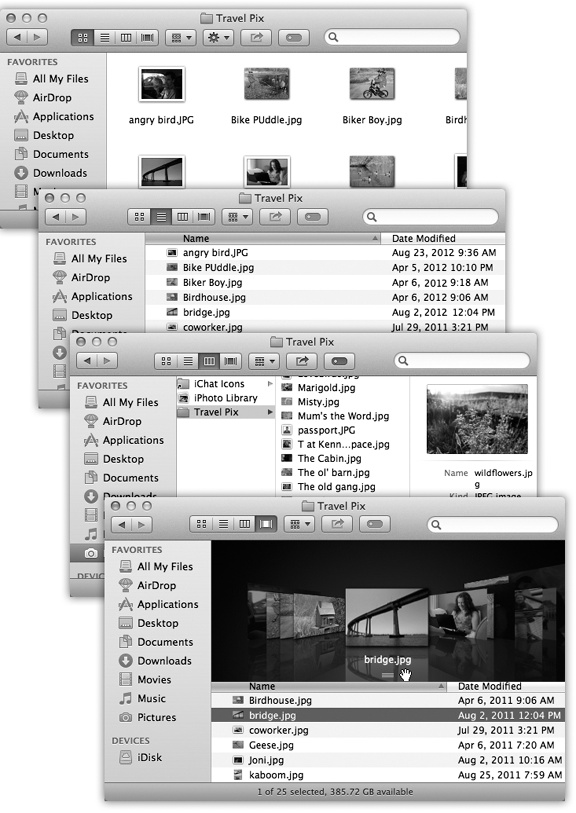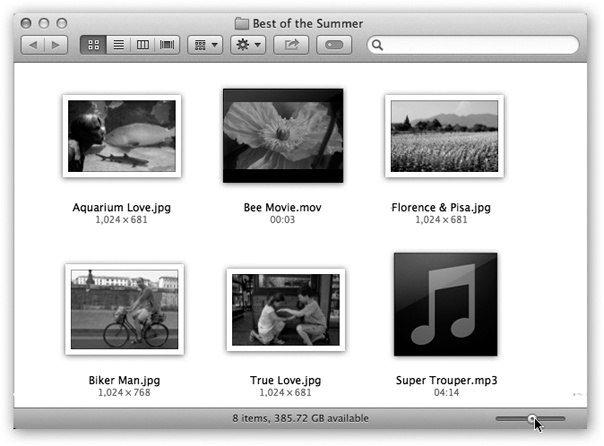You can view the files and folders in a desktop window in any of four ways: as icons; as a single, tidy list; in a series of neat columns; or in Cover Flow view, where you can flip through giant document icons like they’re CDs in a music-store bin. Figure 1-10 shows the four views.
Figure 1-10. From the top: the same window in icon view, list view, column view, and Cover Flow view. Very full folders are best navigated in list or column views, but you may prefer to view emptier folders in icon or Cover Flow views, because larger icons are easier to preview and click. Remember that in any view (icon, list, column, or Cover Flow), you can highlight an icon by typing the first few letters of its name. In icon, list, or Cover Flow views, you can also press Tab to highlight the next icon (in alphabetical order), or Shift-Tab to highlight the previous one.
Every window remembers its view settings independently. You might prefer to look over your Applications folder in list view (because it’s crammed with files and folders) but view the Pictures folder in icon or Cover Flow view, where the larger icons serve as previews of the photos.
To switch a window from one view to another, just click one of the four corresponding icons in the window’s toolbar (Figure 1-10).
You can also switch views by choosing View→as Icons (or View→as Columns, or View→as List, or View→as Cover Flow), which can be handy if you’ve hidden the toolbar. Or, for less mousing and more hard-bodied efficiency, press ⌘-1 for icon view, ⌘-2 for list view, ⌘-3 for column view, or ⌘-4 for Cover Flow view.
The following pages cover each of these views in greater detail.
Note
One common thread in the following discussions is the availability of the View Options palette, which lets you set up the sorting, text size, icon size, and other features of each view, either one window at a time or for all windows.
Apple gives you a million different ways to open View Options.
You can choose View→Show View Options, or press ⌘-J, or choose Show
View Options from the ![]() menu at the top of every window.
menu at the top of every window.
Get OS X Mavericks: The Missing Manual now with the O’Reilly learning platform.
O’Reilly members experience books, live events, courses curated by job role, and more from O’Reilly and nearly 200 top publishers.



